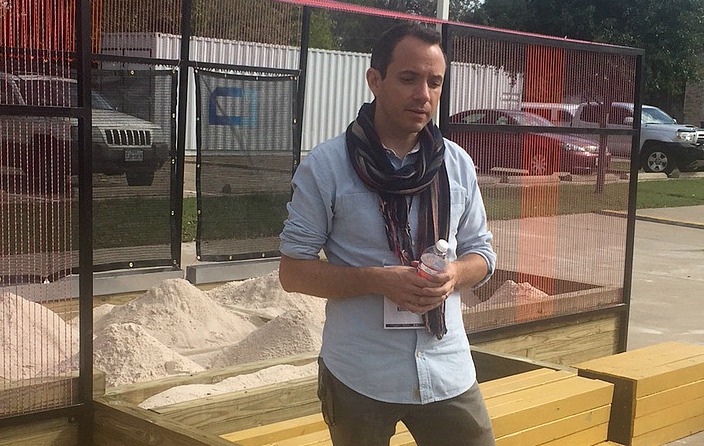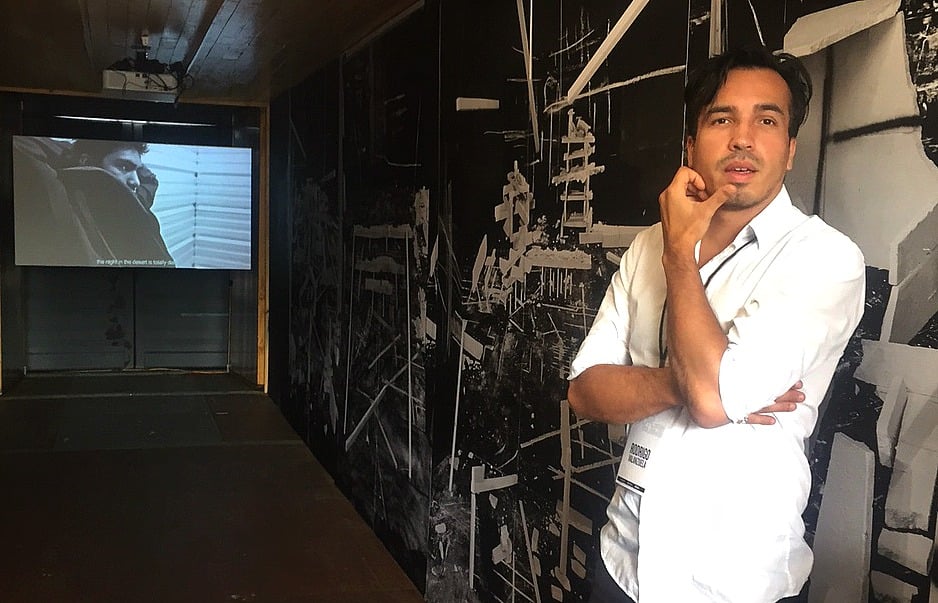A conference on the galloping development of Southwestern cities is being held in Dallas this weekend through Monday, and it’s more than your usual cluster of panels and workshops. New Cities, Future Ruins is the name for a four-year initiative that will lead to artworks, design projects and residencies here and in El Paso and Phoenix. Art & Seek’s Jerome Weeks sat down with Gavin Kroeber, artistic director of New Cities, Future Ruins.
So New Cities, Future Ruins is a conference/festival about the future of the Sunbelt cities. But beyond that description, things get complicated. Explain.
New Cities, Future Ruins is a hybrid, multi-disciplinary conference and festival, winner of SMU’s Meadows Prize. The four-day event features bus tours, workshops, neighborhood walks, panels and exhibitions in Jubilee Park in southeast Dallas, SMU’s Doolin Gallery and Hope Lobby, and at the Beefhaus gallery near Fair Park. In the future, the four-year initiative moves to UT El Paso and Phoenix, Arizona
GK The cities of the Western Sunbelt are the places demographers point to as a counterpoint to the decline of the Rust Belt and the coasts. This is where a middle-class has been retrenching. And the rise of a city like Phoenix or Dallas was actually premised on the decline of those cities. There were policy decisions made — federal funding shifted to move financial energy from unionized cities in the North and the East to these new cities in the Southwest. These are also cities that point the way America is moving along racial lines. The demographic gaps in these cities – between the oldest population which is predominantly Anglo and the youngest third of the population which is intensely more diverse – point towards the coming ‘colorization’ of America.
So there’s all these historical linkages.

Gavin Kroeber, artistic director of New Cities, Future Ruins. Photo: Anne Bothwell
So what is this conference about?
GK So for New Cities, Future Ruins, we’ve invited artists and designers and thinkers to engage these cities, to create projects that unpack what’s happening here, that look at all these different conditions — dynamic growth, demographic change, the ecological costs of sprawl – and speculate on the future of these cities because, in a lot of ways, these cities are tracking the future of the country.
Some of these issues that these cities face are things like water resource management or renewable energy sources. What do artists bring to what are pretty complicated logistical, ecological and even legal issues?
GK First and foremost, I think that through art, we change the way we see the world, that to answer these questions and rise to the challenges, everything depends on how we see those problems. And so an art work or design work can push back against received narratives about what these cities are: the persistence of the Old West myth or the persistence of an anti-suburban bias that we’ve inherited since the ‘60s.
And I think that’s what we’re trying to do. This convening launches a four-year initiative that will include artist residencies and public commissions and exhibitions around the region and touring beyond.

Rodrigo Valenzuela, ‘Hedonic Reversal,’ inside a shipping container in Jubilee Park & Community Center. Photo: Anne Bothwell
Given the topic of New Cities, Future Ruins, does it offer any particular take on North Texas?
GK The sheer scale of the metroplex is stunning. And it’s really fascinating being here where the so-called ‘Texas Miracle’ has insulated the city to a degree from some of the damage of the housing crisis. And I think a lot of what we’re thinking about here are what the effects of sustained growth are on a city, on the people that live in it , on our ways of life.
The title of the initiative, New Cities, Future Ruins — it reads like a prophecy, right? But there is a comma in the title and I think, really, what we’re looking at here is there’s a kind of indulgent apocalyptic vision of these cities, at the same time there is a set of forces locally that love to indulge in a kind of techno-utopianism, that we’re going to innovate solutions that let us keep doing the same.
And I think for us, we’re trying to think about futures that are neither sparkling new cities nor dustcloud ruins. What does a future for Dallas look like that is actually a patchwork of resiliency and collapse and how do we live inside of that?












